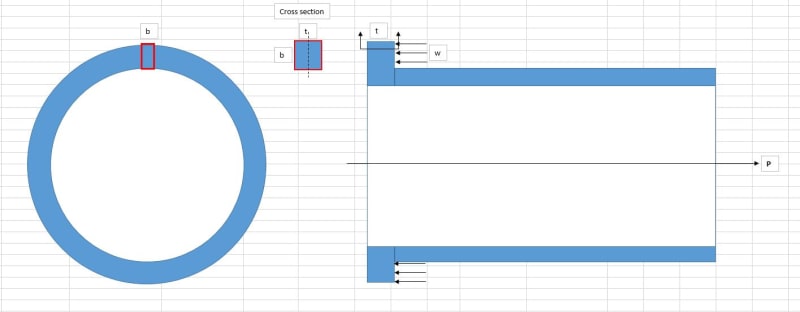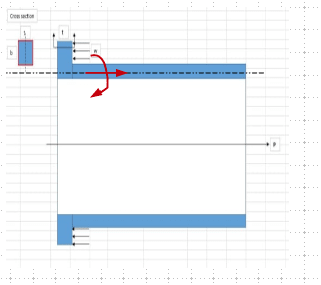hootrpootr
Aerospace
Hello,
I'm checking the bending of a bushing flange, where a high axial force (along axis of bushing) is essentially pulling the bushing through a hole and causing the flange to "kick up". How would I determine the moment and stress caused by the load?
I'm thinking, what if I convert the pressure to a distributed load "w" (P/A x circumference) and treat the distributed load as acting over a thin section of thickness "b"? Then the moment would simply be wL^2/2 and the stress would be My/I, where y is t/2.

Apologies for the crude excel sketch. Any thoughts are appreciated!
I'm checking the bending of a bushing flange, where a high axial force (along axis of bushing) is essentially pulling the bushing through a hole and causing the flange to "kick up". How would I determine the moment and stress caused by the load?
I'm thinking, what if I convert the pressure to a distributed load "w" (P/A x circumference) and treat the distributed load as acting over a thin section of thickness "b"? Then the moment would simply be wL^2/2 and the stress would be My/I, where y is t/2.

Apologies for the crude excel sketch. Any thoughts are appreciated!

